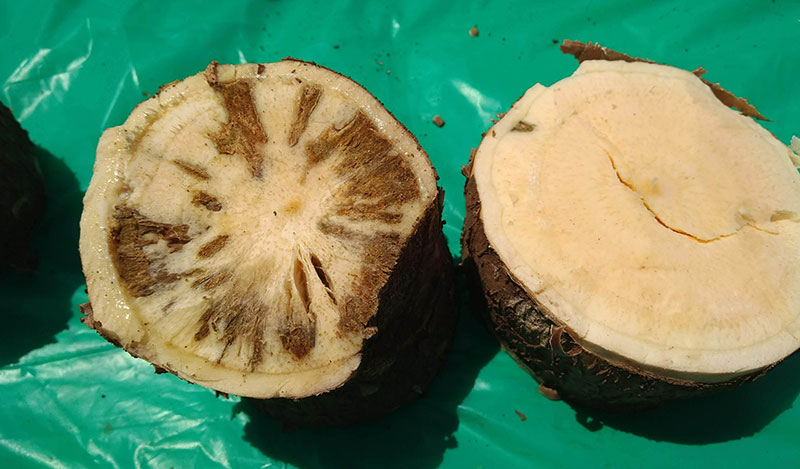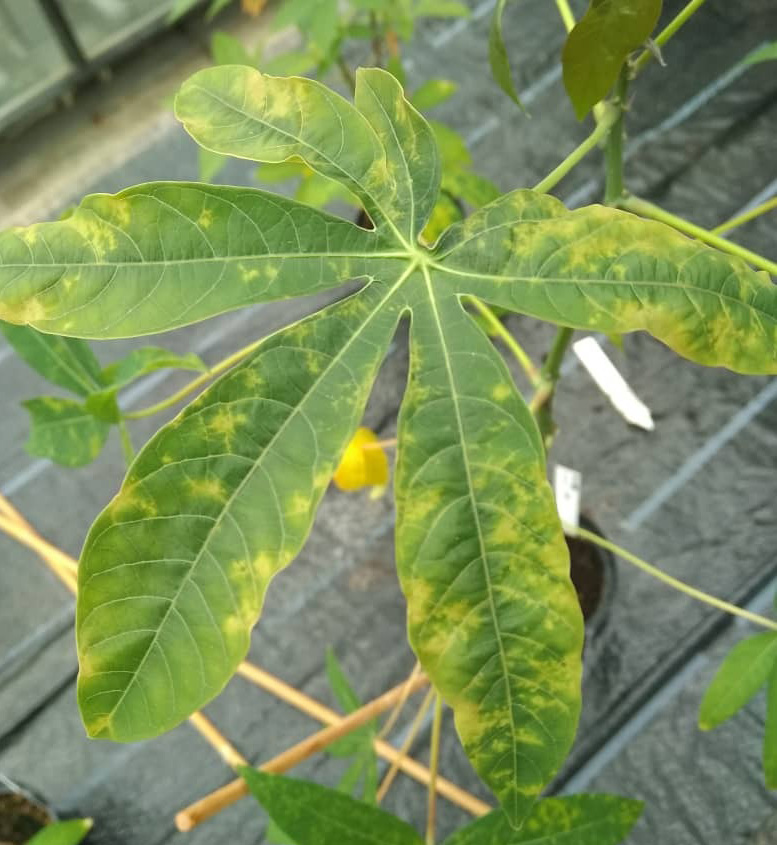Leah Nandudu is a PhD candidate at Cornell University. She was recently named a recipient of the Schmittau-Novak Small Grants Program. The grants are designed to provide graduate students in Cornell’s School of Integrative Plant Science with the opportunity to experience the process of writing and reviewing proposals, and implementing a research plan of their own design.
Why did you enter the field of plant breeding and specifically cassava?
I am passionate about plant breeding because it’s my way of contributing towards humanity. This passion developed from the first time I interacted with small-scale farmers who, despite all their efforts, attain low yields that render them vulnerable to food and economic insecurity. Plant breeding can provide high yielding, disease resistant and biofortified food crops that can improve the livelihoods of small-scale farmers whose efforts maintain food supply chains around the world. I am interested in cassava because it’s a crop that is crucial for small-scale farmers in sub-Saharan Africa yet it’s being ravaged by cassava brown streak disease. The most sustainable way of controlling this disease is breeding for resistance. What keeps me going in my pursuit to improve cassava resistance against cassava brown streak disease is knowing that the work I do puts a meal on someone’s plate and money in their pockets.
Current research
Cassava (Manihot esculenta Crantz) is a mainstay for both the rural and urban populace in tropical Africa. Its roots and leaves are exploited in various ways for both food and non-food uses of economic value. Cassava is also drought tolerant with the ability to yield in marginal soils, making it a climate resilient crop. Unfortunately, diseases like cassava brown streak disease (CBSD) constrain cassava production thus threatening food and economic security for millions in sub-Saharan Africa.

Necrosis caused by cassava brown streak disease
Why is CBSD prevalent in East and Central Africa?
CBSD started in the coastal regions of East Africa in the 1930s and was known to thrive only at altitudes below 1000 meters above sea level (masl). At the time, CBSD was not considered a threat to cassava production because of its geographical restriction so breeders concentrated their efforts on breeding for resistance against cassava mosaic disease (CMD) that was wide- spread and caused famines.
To save cassava from CMD, breeders decided to make crosses between East African local varieties and wild relatives of cassava. Unfortunately, cassava varieties that were resistant to CMD were susceptible to CBSD. This provided the opportunity for CBSD to evolve which led to the creation a new CBSD species that could survive at altitudes above 1000 masl. The rampant spread of CBSD was also accelerated by farmers who moved infected planting material across the region. Currently CBSD is prevalent in East and Central Africa, though scientists fear the virus could spread to West Africa, a region whose food systems depend even more on cassava.
What’s your role in breeding against CBSD?
I am collaborating with the National Crops Resources Research Institute Uganda, with support from the NextGen cassava breeding project, to attempt to better understand cassava brown streak viruses by exploring high-throughput virus phenotyping methods and genomic approaches. We are standardizing low-cost high-throughput methods to capture more information about CBSD that can be leveraged when breeding for resistant varieties. These methods include things like image-based tools to identify root necrosis, the most devasting CBSD symptom that affects the cassava roots. We are also involved in determining genomic regions that are associated to CBSD phenotypes using genome wide association studies.

Leaf necrosis
Expected research impacts of our research
Our research will directly or indirectly lead to the development of CBSD resistant varieties consequently improving cassava yield. The research will enable breeders to quantify the amount of CBSD and its impact in CBSD epidemiology, an area that has not been explored before in CBSD resistance breeding. Because these low-cost high throughput phenotyping methods have been shown to be reliable in monitoring virial titer accumulation, we expect that breeders will use these tools in selecting for low or no viral titer thus reducing disease pressure in a region that is known as the world’s CBSD hotspot. Identification of genomic regions associated with CBSD phenotypes will also lead to the discovery of genes that control or contribute to resistance and/or tolerance. Therefore, this research will contribute to food and economic security for millions in sub-Saharan Africa whose livelihoods depend on cassava.






